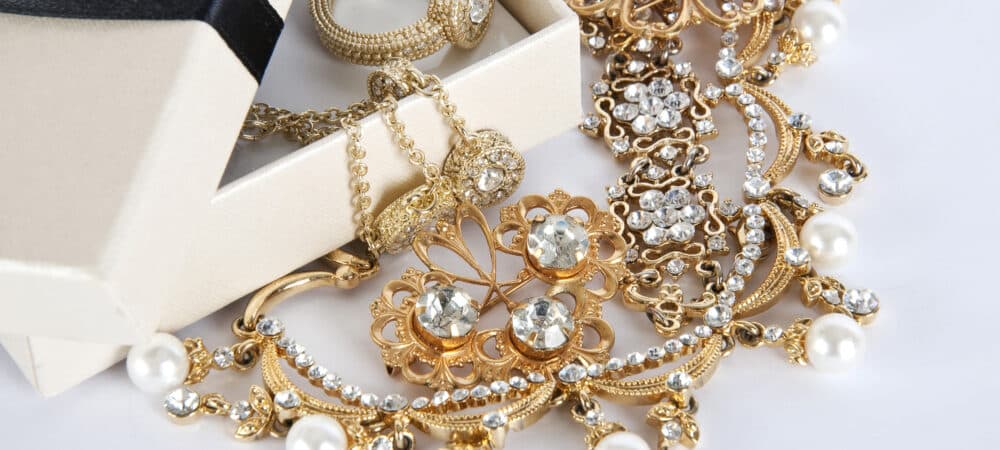Can You Tell How Old a Diamond Is?
-
Shira-Diamonds
-
0 Comment
One can never count how many times the catchphrase diamonds are forever has been said or heard in the course of human history.
The first time it was formally used was in 1947, when jewel company De Beers used it as one of its slogans to advertise their diamond stones.
But more than an iconic slogan, “diamonds are forever” is a phenomenon that is genuine and somehow scientific.
Because as the saying goes, the brilliance of a diamond lasts several lifetimes as proven by the very existence of old diamonds.
Diamonds that have been passed from generation to generation; never losing their beauty.
Do Diamonds Get Better With Age?
Digging deeper on the idea that a diamond lasts an eternity, one might question if there is truly a scientific basis to it or just a marketing ploy.
According to most studies and consensus, natural diamonds can last up to 3.5 billion years.
Technically, a measured time is not forever but if compared to a human lifetime, a billion years feel like an eternity. So there is some truth into saying that diamonds are indeed forever.
If you trace back to the existence of mankind, natural diamonds are way older than the first known humans.
But on paper and actual physical records, the oldest diamonds are known to have existed for hundreds of years.
Some of these include the famous diamonds of Daria-i-Noor and Beau Sancy.
Are Old Cut Diamonds More Valuable?
Old cut diamonds, sometimes called antique cut diamonds and old mine diamonds, are diamond stones that were cut mostly by hands, and not by some modern equipment and machine.
This is of course the prevalent way of diamond-cutting some decades and centuries ago.
In contrast, modern diamonds are cut and processed heavily using complex technology involving lasers and other materials.
A more specific type of old cut diamond that was very popular in the early 1900s (Victorian and Art Deco era) is called the European old cut diamond.
This diamond cut is said to be the direct predecessor of the modern round brilliant cut that we have now.
Meanwhile, old mine cut diamonds were prevalent in the mid-1800s and appear to be very bulky, given the absence of a more precise cutting technology during those times.
Old Diamonds vs New Diamonds
Antique and old diamonds are highly coveted, especially by collectors.
What probably inspires them to do so is the rarity of these diamonds compared to the new ones.
1. Cut and Shape
In terms of cut, new diamonds undergo a more precise and advanced process.
These modern diamonds are cut by a heavily technology-driven process that often involves laser-cutting.
Old cut diamonds on the other hand were mostly done manually or by hands because of the technology they had decades and centuries ago.
Since new diamonds undergo a more precise process, the shape and cut can be characterized as more geometric and polished.
But of course, this does not mean that old-cut diamonds aren’t as beautiful as modern ones.
Furthermore, the obvious difference between the two is on the culet and the table.
Old European cut diamonds tend to have a small table but with a large culet.
Although these cuts differ in terms of the cutting process, both have relatively the same number of facets.
Old European cut diamonds have the same 58 facets like that of most modern diamonds, although round brilliant cuts have 57 facets.
2. Brilliance and Color
The brilliance and color, other than the shape, are the most important qualities of a diamond.
These qualities often determine the price tag of the diamonds you buy whether online or in a physical store.
Antique diamonds appear to emphasize the color, more than the brilliance and sparkle.
These diamonds look warmer when compared to the modern cuts. This is in line with the difference in the cutting process between the two.
On the other hand, new diamonds are said to be more superior in brilliance compared to its predecessor.
Old diamonds pale in comparison to the sparkle or glow of a modern brilliant cut diamond.
This can be easily determined even by non-experts especially if you put the two under a light.
The reason why they differ in brilliance roots back to the cut and shape.
Since new diamonds have a more geometric and symmetrical cut, they reflect light effectively.
These diamonds then appear to sparkle very brilliantly, making them more appealing for most people.
Meanwhile, old mine diamonds have larger facets so they have softer sparkle.
3. Price
Another clear difference between these two is the price.
On the surface level, the price of every diamond is determined by its 4Cs – color, clarity, cut, and carat.
The clearer, cleaner, more colorless, and heavier a diamond stone is, the more expensive it will be.
Old diamonds for sale in diamond stores or antique shops, whether it be the old European cut or old mine, are relatively cheaper by around 15-20% compared to any modern cut diamonds.
This is of course assuming you are comparing stones that have the same carat weight and color because a stone with more carat will be more expensive.
So the question now is, should you buy an old cut diamond over modern ones?
It really depends on what you are looking for.
As mentioned, both have its pros and cons mostly on the appearance or brilliance and the price tag.
But if you really want to spend less and may have a sentimental attraction to antique beauties, perhaps buying old diamonds fits you more.
After all, diamonds are truly forever.
More from Shira Diamonds













